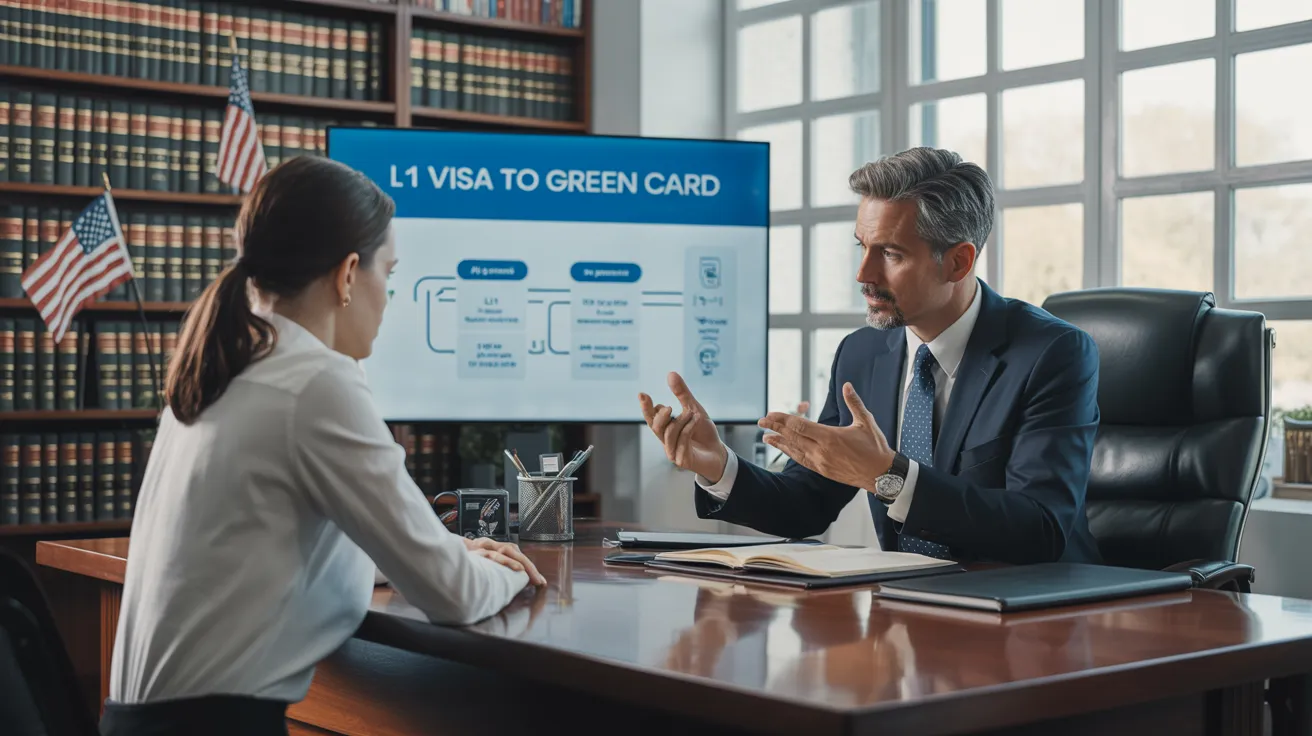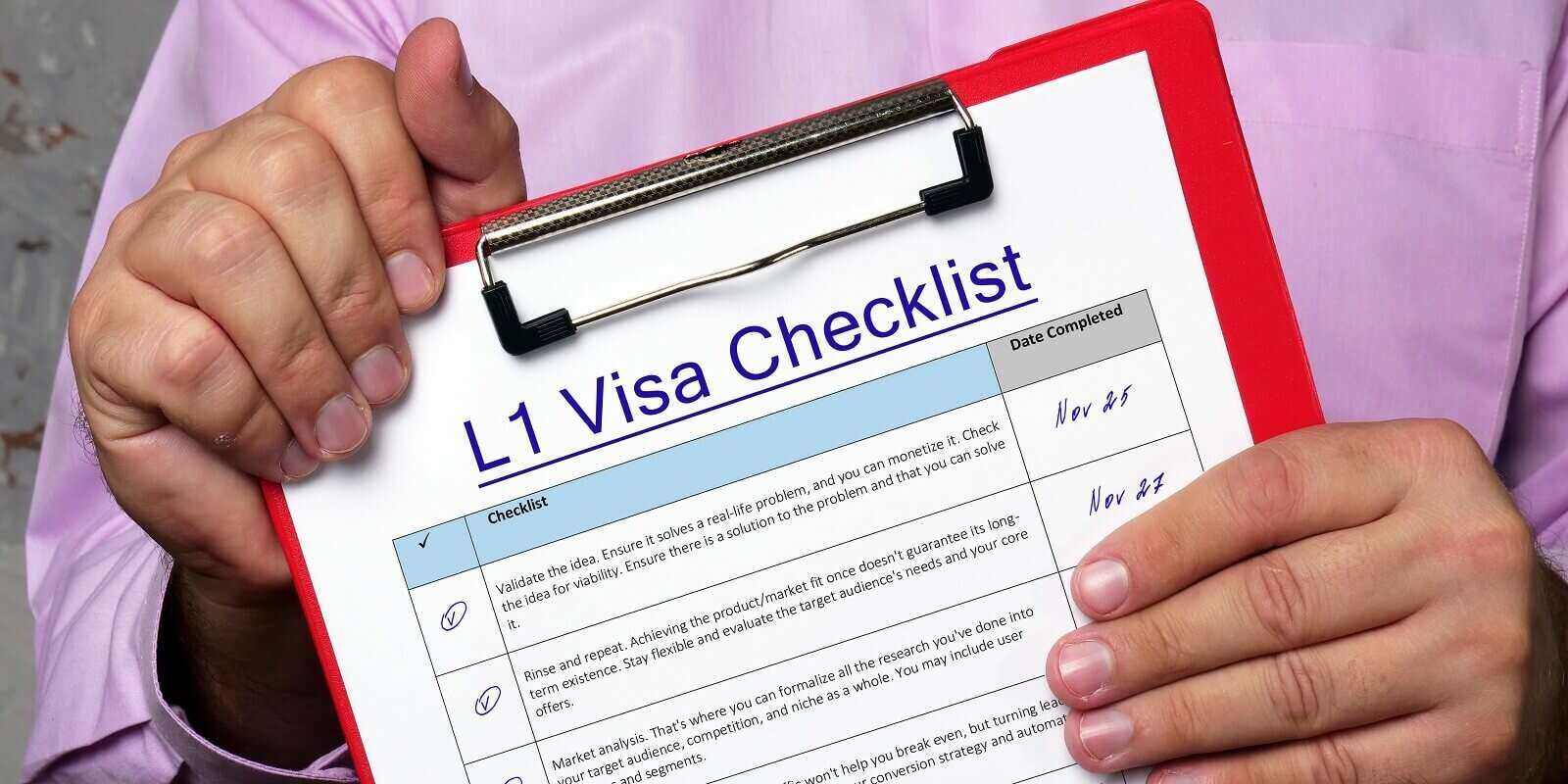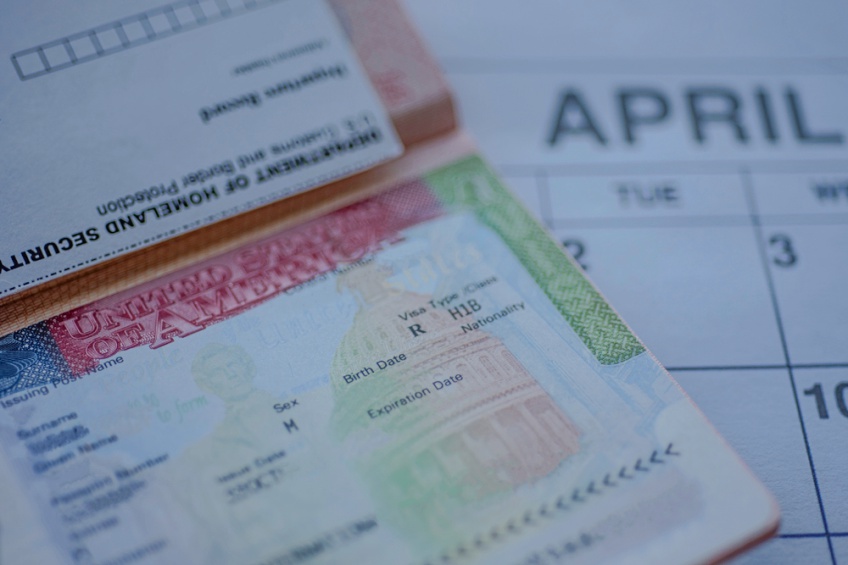Opening Opportunities: A Comprehensive Overview to the L1 Visa Process
The L1 visa procedure offers a vital pathway for international companies seeking to transfer key workers throughout boundaries. Recognizing the nuances of eligibility criteria, the distinctions in between L-1A and L-1B visas, and the intricacies of the application process can considerably influence an applicant's success. Steering this facility landscape is not without its difficulties, and mindful focus to paperwork and employer sponsorship is essential. As we discover the key components of this procedure, the methods for getting over prospective barriers will come to be obvious, disclosing exactly how informed prep work can open a world of opportunities.
Comprehending the L1 Visa
Understanding the L1 visa entails identifying its significance as an important device for multinational firms looking for to transfer competent workers between worldwide offices. This non-immigrant visa classification assists in the movement of executives, supervisors, and specialized knowledge employees to the USA, thus making it possible for companies to maintain operational continuity and harness international talent successfully. The L1 visa is divided into 2 primary categories: L-1A for managers and executives, and L-1B for staff members having specialized knowledge.The L1 visa serves a vital function in boosting a firm's one-upmanship in the global marketplace. By permitting firms to transfer their key workers, businesses can assure that essential jobs are taken care of by certified people that are currently accustomed to the company's culture and functional processes. L1 Visa. This internal transfer system not just fosters understanding sharing however likewise advertises innovation and collaboration throughout borders.Moreover, the L1 visa is commonly preferred for its fairly straightforward application process contrasted to various other visa groups, as it enables twin intent, allowing holders to pursue permanent residency while on a momentary job visa. This feature makes the L1 visa particularly appealing for both companies and staff members, as it enhances the path for skilled specialists to develop lasting residency in the United States
Eligibility Criteria
Eligibility for the L1 visa depends upon numerous key standards that ensure both the employee and the company fulfill particular certifications. This non-immigrant visa is made for multinational firms to move employees from international workplaces to U.S. counterparts.Firstly, the employer needs to be a certifying company, which consists of a parent company, branch, associate, or subsidiary of a united state business. The company has to have been doing business for at the very least one year both in the united state and abroad. This guarantees that the company has sufficient operational stability and a legit presence.Secondly, the staff member should hold a managerial, executive, or specialized knowledge setting. For L1A visas, the applicant must demonstrate supervisory or executive qualifications, while L1B visas focus on specialized knowledge associated to the company's products, services, or processes. Additionally, the worker has to have helped the foreign entity for at least one continual year within the last three years prior to their application.Lastly, the worker's duty in the U.S. must line up with their previous setting, making certain that their skills and proficiency are leveraged for the firm's advantage.

Types of L1 Visas
The L1 visa group makes up two key types made to help with the transfer of staff members within multinational companies: the L1A visa for supervisors and execs, and the L1B visa for staff members with specialized expertise. Each kind serves unique functions and has specific qualification criteria.The L1A visa is tailored for individuals that hold managerial or executive positions within a company. This visa enables high-level staff members to transfer to a united state branch, subsidiary, or associate of the very same company. Candidates for the L1A visa have to show that they have actually been used in a supervisory or executive capability for at the very least one continuous year within the past 3 years prior to their application. Additionally, this visa provides a longer period of stay, initially approved for three years, with the opportunity of expansions for approximately 7 years.In contrast, the L1B visa is meant for professionals with specialized expertise related to the firm's products, services, or procedures. To qualify, candidates need to confirm that their knowledge is essential to the company which they have actually helped a minimum of one continuous year within the last three years in a function that needed this specialized knowledge. The L1B visa is initially given for 3 years, with extensions readily available for up to 5 years.Both visa types are crucial for companies looking for to enhance their international procedures by leveraging experienced personnel, thereby promoting innovation and efficiency within the united state market.
Application Process
Guiding through the L1 copyright procedure entails several crucial steps that should be carefully followed to ensure an effective outcome. The procedure begins with the U.S. employer, who need to first develop eligibility by showing a qualifying relationship with the foreign entity and confirming that the staff member meets the specific needs for the L1 visa group being sought.Once eligibility is verified, the company launches the procedure by filing Kind I-129, the Request for a Nonimmigrant Worker, with the United State Citizenship and Migration Solutions (USCIS) This type must be come with by a detailed summary of the job obligations to be done, the organizational framework of both the U.S. and foreign entities, and the staff member's credentials. It's vital to validate that all info is exact and complete, as noninclusions or inaccuracies can bring about delays or denials.Upon approval of the I-129 request, the following action includes the worker obtaining the L1 visa at a united state embassy or consular office in their home country. This phase calls for the completion of Kind DS-160, the Online Nonimmigrant copyright, and setting up an interview. During the interview, the candidate should offer evidence supporting their qualifications and the company's petition.After the visa is provided, the worker can go into the United States to operate in the marked duty. Overall, cautious preparation and adherence to each action of the application process are important for an effective L1 visa result.
Called for Documentation

Necessary Forms Needed
Steering the L1 Visa process calls for careful attention to the essential kinds and documents essential for an effective application. The key kind required is the Form I-129, Request for a Nonimmigrant Employee, which need to be finished and submitted by the U.S. company (L1 Visa). This form details the information of the work deal and the credentials of the worker seeking the L1 Visa.Alongside Type I-129, the candidate will need to complete Kind I-539 if accompanying member of the family are additionally making an application for visas. Additionally, the employer should offer evidence of the certifying connection in between the united state entity and the international entity, often necessitating the entry of corporate documents such as posts of consolidation or monetary statements.Moreover, it is necessary to consist of the L Classification Supplement to Type I-129, which specifies the kind of L Visa being asked for-- either L-1A for supervisors and executives or L-1B for staff members with specialized understanding. Lastly, candidates should ensure that all kinds are signed and dated appropriately, as insufficient entries can cause hold-ups or rejections. Properly setting up these important forms lays the structure for a smoother L1 copyright procedure
Sustaining Evidence Needs
Supporting documentation is important for a successful L1 copyright, as it corroborates the cases made in the petition. Applicants must supply a variety of documents to demonstrate eligibility for the visa, which is classified right into 2 main kinds: evidence of the certifying connection in between the U.S. and foreign entities and evidence of the applicant's qualifications.To establish the relationship, applicants should send documentation such as corporate organizational charts, economic statements, and proof of ownership. These files validate that the international firm has a qualifying relationship with the united state company, whether as a parent firm, subsidiary, branch, or affiliate.For the candidate's certifications, necessary papers include an in-depth employment letter from the foreign employer, laying out the candidate's task title, responsibilities, and period of work. Additionally, instructional credentials, such as levels and diplomas, should be given to show the applicant's competence in the relevant field.
Company Sponsorship Files
Employer sponsorship papers play an essential role in the L1 copyright procedure, as they validate the united state company's dedication to the applicant's employment in the United States. These files are vital for demonstrating the company's qualification to fund the applicant for the L1 Visa.Key papers usually called for include an in-depth work letter from the united state company, which outlines the job title, obligations, and the nature of the employment connection. In addition, the employer should supply proof of the business's legitimacy, such as service licenses, income tax return, and organizational charts, showing the connection in between the united state entity and the foreign company.Furthermore, evidence of the employee's certifying relationship with the foreign company is needed. This may include documents showing the staff member's duty in the international entity, such as pay stubs, employment contracts, or efficiency assessments.
Typical Challenges
Maneuvering the L1 visa procedure offers numerous usual difficulties that applicants need to know (L1 Visa). Key concerns typically consist of stringent documents requirements, prospective delays in handling times, and the need for stringent lawful conformity. Comprehending these barriers can assist applicants better prepare and mitigate threats throughout their copyright journey
Documentation Requirements
The L1 copyright process frequently provides substantial obstacles associated with paperwork demands. Applicants should give substantial paperwork to develop eligibility, which can result in confusion and possible hold-ups. Key papers include evidence of a certifying connection between the U.S. and foreign employer, proof of the candidate's work background, and detailed information about the job role in the U.S.One usual obstacle is collecting enough proof to show the nature of the certifying connection. Business often struggle to existing clear business graphes or economic statements that illustrate the link between the entities. In addition, guaranteeing that letters of support from employers accurately mirror the candidate's work responsibilities and qualifications is essential, as unclear descriptions can cause denials.Another issue arises from the demand for thorough task descriptions that align with the L1 visa categories. Applicants need to articulate not only their existing duty yet likewise their supervisory or specific knowledge duties clearly. This requires a thorough understanding of both the candidate's position and the regulatory language made use of in L1 applications.
Handling Time Delays
Experiencing delays in handling times is a typical obstacle faced by L1 visa candidates, frequently leading to stress and unpredictability. Numerous elements add to these delays, consisting of high application volumes, boosted scrutiny of applications, and administrative stockpiles within the united state Citizenship and Migration Services (USCIS) Candidates might find that processing times can vary greatly relying on the service facility handling their application, as each center has its very own work and effectiveness degrees. In addition, the intricacy of the applicant's case, such as the demand for comprehensive documents or explanation, can better expand wait times.In some circumstances, problems associated with the applicant's current migration standing or previous visa background may additionally result in extra delays, as USCIS may need additional review or info. It is essential for candidates to remain proactive during this period, preserving open communication with their companies and lawful representatives to deal with any kind of potential issues promptly.Understanding these processing time challenges can help L1 visa applicants plan for feasible delays and alleviate the influence on their shift and occupation strategies. Perseverance and persistance are important merits in navigating this detailed procedure.
Lawful Conformity Issues
Several L1 visa candidates encounter lawful compliance issues that can complicate their journey towards getting the visa. Understanding and adhering to the specific regulations established by the united state Citizenship and Migration Services (USCIS) is important. Common obstacles include demonstrating the qualifying connection in between the foreign and U.S. employers, as well as verifying that the applicant has the requisite customized expertise or managerial capacity.Additionally, applicants must provide comprehensive documentation detailing their task obligations, company framework, and economic feasibility of the united state entity. Insufficient or inaccurate documents can result in delays or even rejections. Companies should additionally assure that they abide by labor legislations, including wage and functioning condition requirements, which can affect visa eligibility.Another typical issue includes keeping conformity with the regards to the visa once approved. Adjustments in employment condition, work duties, or company framework can demand changes to the visa, which otherwise resolved immediately can lead to legal problems. Consequently, remaining notified about compliance demands and looking for lawful advice when necessary is important to navigate the intricacies of the L1 visa process successfully.
Tips for Success
Success in the L1 copyright process often depends upon meticulous prep work and interest to information. To enhance your possibilities of approval, start by thoroughly comprehending the qualification requirements for both the L1A and L1B visa classifications. Assess whether your position at the firm qualifies as managerial, executive, or specialized knowledge, as this categorization especially affects your application.Next, collect considerable documentation that corroborates your cases. This consists of organizational charts, detailed job descriptions, and proof of the company's operational framework. Clear and concise proof of the certifying partnership between the united state entity and the international entity is vital. Validate that all files are arranged realistically and presented in a specialist manner, as this reflects your dedication and severity concerning the application.Engage the solutions of an experienced migration lawyer that focuses on L1 visas. Their experience can prove very useful, assisting you with complicated policies and guaranteeing that all documentation adheres to current regulations. Furthermore, prepare for the meeting by exercising solution to usual questions and being all set to review your function and payments to the firm detailed.
Frequently Asked Concerns
Can Family Members Go Along With the L1 Visa Owner?
Yes, relative of L1 visa owners, including partners and unmarried youngsters under 21, can go along with the key visa owner. They may additionally obtain L2 visas, which permit them to live in the United States.
Just How Long Can I Stay on an L1 Visa?
The L1 visa permits preliminary remains of approximately three L1 Visa years, with the possibility of expansion. L1A visa holders may remain for a maximum of seven years, while L1B visa holders can continue to be for 5 years.
Can L1 Visa Owners Make An Application For a copyright?
Yes, L1 visa owners can look for an eco-friendly card. They might go after long-term residency with employment-based groups, generally needing sponsorship from their company, provided they fulfill the required certifications and documents needs.
What Takes place if My L1 copyright Is Denied?
If your L1 copyright is rejected, you may receive a notification describing the factors for rejection. You can seek to appeal the decision, reapply, or check out alternate visa choices based on your circumstances.
Are There Any Type Of Travel Constraints With an L1 Visa?
An L1 visa generally enables global traveling; nonetheless, re-entry to the united state rests upon maintaining legitimate condition. Travelers must ensure compliance with visa conditions to stay clear of problems upon return
Final thought

Comments on “L1 Visa Attorney Support”